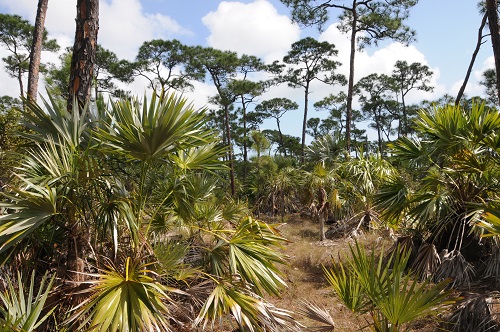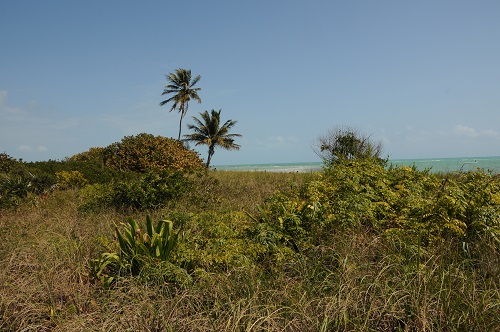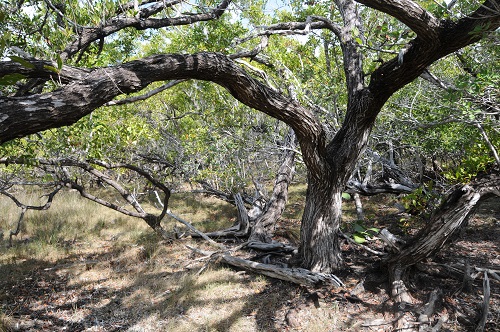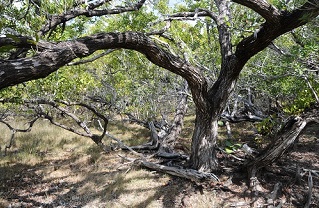Conservation biology and climate change
Florida has many endemic and imperiled species and ecosystems vulnerable to climate change, urbanization, and other stressors. UCF researchers in the Biology Department are exploring options for maintaining these species and ecosystems in the face of warmer temperatures, sea level rise, and changes in rainfall patterns, in combination with land-use change related to a growing human population. Three of these ecosystems are represented here.

Pine Rocklands, Big Pine Key (Photo: R. Noss, UCF)
Pine Rocklands
The pine rocklands ecosystem is restricted to the Miami Rock Ridge (which includes part of the Everglades) and the Lower Keys, areas at high risk from sea level rise and storm surge. These ecosystems are fire-dependent and contain many rare species. In the Lower Keys, highly imperiled species include the Key deer, Lower Keys marsh rabbit, wedge spurge, and Big Pine partridge pea.

Tropical coastal strand, Bahia Honda (Photo: R. Noss, UCF)
Coastal Uplands
Coastal uplands such as coastal strand, coastal berm, coastal grasslands, beach dunes, maritime hammocks, and shell mounds are distinctive ecosystems in Florida, with many rare species and high tourism value. These key ecosystems are strongly affected by rising sea levels and increased storm surge.

Buttonwood forest (savanna) (Photo: R. Noss, UCF)
Buttonwood Forest
The buttonwood forest is the most inland of the mangrove communities, often occupying an ecotone, or transition zone, to the adjacent upland community. This ecosystem is prime habitat for the endangered Lower Keys marsh rabbit. They are threatened by changing rainfall patterns, sea level rise, and increased storm surge.
UCF’s Research on Conservation Biology and Climate Change
The UCF Biology team, in collaboration with researchers at University of Florida, Florida Natural Areas Inventory, and Valdosta State University, is currently engaged in:
- Applying a new methodology for assessing the vulnerability of species to combined impacts of sea-level rise, climate (temperature and precipitation) change, and land-use change to 300 Florida species.
- Developing a methodology and evaluating natural communities in Florida in terms of their potential direct or indirect vulnerability to sea-level rise and associated threats.
- Finalizing and publishing state-wide high-resolution bathtub inundation and Sea Level Affecting Marshes (SLAMM) models for Florida.
- Updating and revising the Florida 2060 human population and land-use change model, which projects land-use change in Florida as a function of population growth, urban growth, conversion of natural lands to agricultural use, and relocation of human populations displaced by sea-level rise.
- Developing education and communication materials and building a stakeholder network for disseminating the results of our research and providing outreach to decision makers and the public.

